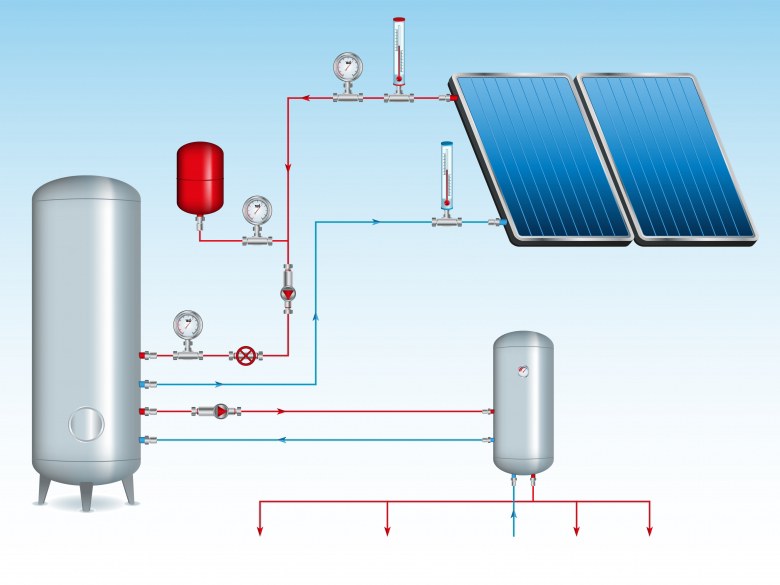As the name implies, a solar water heating system uses the power of the sun to produce hot water in a home, either by directly warming the water or via an intermediary fluid. A direct system pumps water to the solar collectors and back to the storage container, while an indirect system first heats the intermediary fluid, which is pumped through tubes in the storage tank, thereby heating the water.
Most solar water heating systems use flat plate collectors, which consist of a dark absorption plate at the bottom of a box with a clear cover. The collectors are typically placed on the roof, which allows easy access for sunlight to heat the absorption plates. Tubes run through the box, which pass the heat from the absorption plate to the water or intermediary fluid.
While the flat plate collectors are the most common option, many industrial solar water heating systems use evacuated tube collectors, parabolic trough collectors, transpired solar collectors or concentrating collectors. Since none of these designs are ideal for home use, they will not be discussed in detail.
Another common collector used in home solar heating systems, however, is the batch heater. This system is the most direct way to heat water through solar energy in that the storage tank itself acts as the collector. Typically, this system uses a dark-colored tank, enclosed in glass, which is exposed to the sun, either on the roof or on the ground, and then feeds the warm water into the rest of the plumbing system.
An effective solar water heating system can produce up to 70% of a typical family’s hot water needs. Sophisticated systems may have a conventional water heater attached to automatically supplement the hot water supply as needed.
Hot water can be one of the most significant regular expenses for a homeowner, particularly in cooler climates. Not only can a solar water heating system dramatically reduce utility bills, but these systems are more environmentally friendly than conventional systems, due to reduced electricity use, and therefore may enable qualify the user for tax credits.

